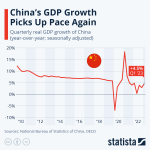Green financing is the provision of finance to projects that promote sustainability and reduce negative environmental impacts. It can include various financial products designed to fund environmentally sustainable projects and businesses.
KXCO can provide structuring, listing and distribution in the world’s traditional and digital markets.
Here are some of the different types of green financing KXCO can assist with:
- Green Bonds: Green bonds are fixed-income securities that are specifically designed to finance environmentally sustainable projects. The proceeds from green bonds are exclusively used to fund projects that promote sustainability, such as renewable energy, energy efficiency, and sustainable infrastructure projects.
- Green Loans: Green loans are similar to traditional loans, but they are used to fund projects that have a positive environmental impact. The loan proceeds are used to finance projects that promote sustainability, such as energy-efficient buildings, renewable energy projects, and sustainable transport infrastructure.
- Green Equity: Green equity refers to investments made in companies that promote sustainability and have a positive environmental impact. Green equity investments can be made in companies that are involved in renewable energy, energy efficiency, sustainable transport, and other sustainable industries.
- Green Funds: Green funds are investment funds that focus on environmentally sustainable projects. These funds invest in companies that promote sustainability, such as renewable energy companies, energy-efficient building developers, and sustainable infrastructure projects.
- Green Project Finance: Green project finance involves the financing of specific environmentally sustainable projects. This type of financing is typically used for large-scale projects, such as renewable energy projects, sustainable transport infrastructure, and sustainable buildings.
- Carbon Credits: Carbon credits are a type of financial instrument that represents a reduction in carbon emissions. They are typically issued to companies that reduce their carbon footprint, and they can be sold on the carbon market. Carbon credits are used to fund sustainable projects and promote sustainability.
Green financing is an essential tool in promoting sustainability and achieving the transition to a low-carbon economy. The different types of green financing provide a range of options for investors and organizations to finance environmentally sustainable projects and businesses. By providing finance to sustainable projects, green financing helps to mitigate the negative environmental impacts of economic activity and promote sustainable economic development.
Over the past few years, the concept of green financing has gained tremendous popularity as more and more individuals and organizations seek to make environmentally conscious investments. Green financing refers to the process of raising funds for projects or activities that promote sustainability or combat climate change. This includes renewable energy projects, green buildings, sustainable agriculture, and many other initiatives that aim to reduce carbon emissions and promote a healthier planet.
The growth of the green financing market has been significant in recent years, driven by a number of factors including increasing awareness of the impact of climate change, regulatory incentives, and a growing interest in responsible investing.
One of the main drivers of the green financing market is the increasing awareness of the impact of climate change. As more and more people become aware of the devastating effects of global warming, there is a growing demand for investment options that align with their values. This has led to a surge in the number of green bonds, green loans, and other green investment products, which are specifically designed to fund environmentally friendly projects.
Another key factor driving the growth of the green financing market is regulatory incentives. Governments around the world are increasingly recognizing the importance of sustainable development and are implementing policies to encourage green investment. For example, some governments have introduced tax incentives for companies that invest in renewable energy, while others have mandated that a certain percentage of power must come from renewable sources.
In addition to regulatory incentives, there is also a growing interest in responsible investing. Many investors are now looking for opportunities to invest in companies and projects that have a positive social and environmental impact, as well as the potential for financial returns. This has led to a rise in the number of green funds and other investment vehicles that focus on sustainability.
The growth of the green financing market is also being fueled by advances in technology. As renewable energy technology becomes more efficient and cost-effective, it is increasingly becoming a viable alternative to fossil fuels. This has led to a surge in demand for green energy projects, which are being funded through green financing mechanisms.
Despite the many benefits of green financing, there are still some challenges that need to be addressed. One of the main challenges is the lack of standardization and transparency in the green financing market. This can make it difficult for investors to assess the environmental impact of their investments and can also lead to confusion and skepticism about the validity of green investment products.
To address these challenges, there are a number of initiatives underway to establish standards and guidelines for green financing. For example, the Green Bond Principles, developed by the International Capital Market Association, provide a framework for issuers to disclose the environmental impact of their bonds.
Overall, the growth of the green financing market is a positive development for the planet and for investors who want to make a positive impact with their investments. As governments, businesses, and individuals continue to prioritize sustainability, the green financing market is likely to continue to grow and evolve in the coming years.









